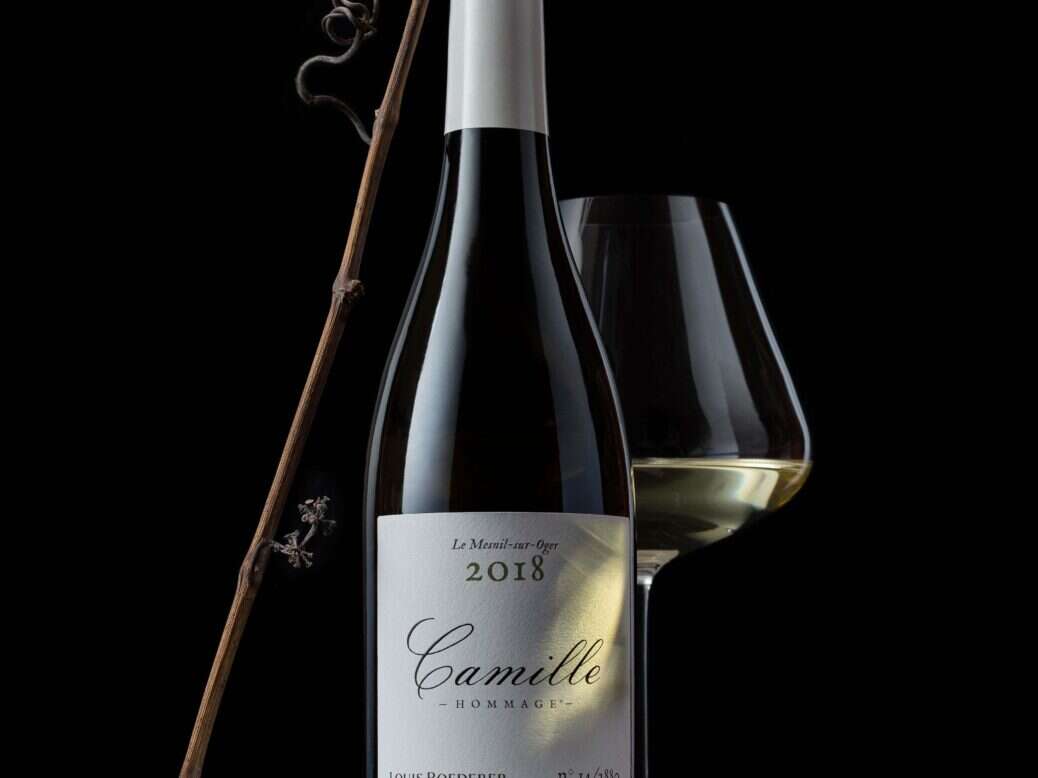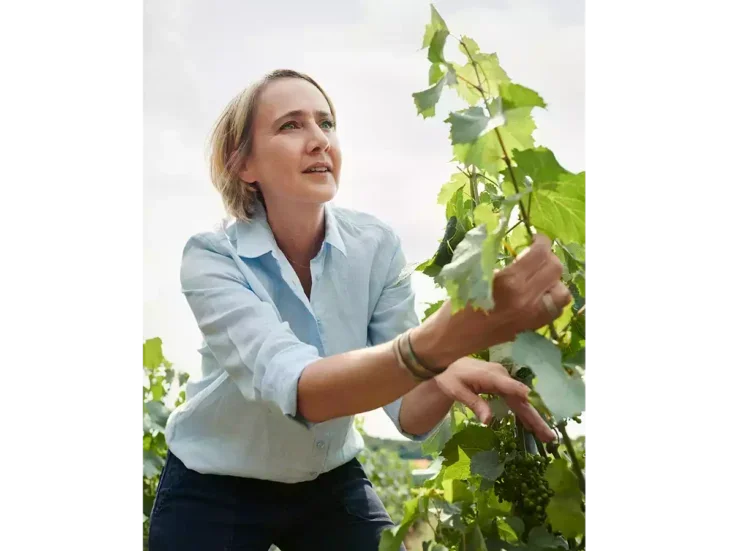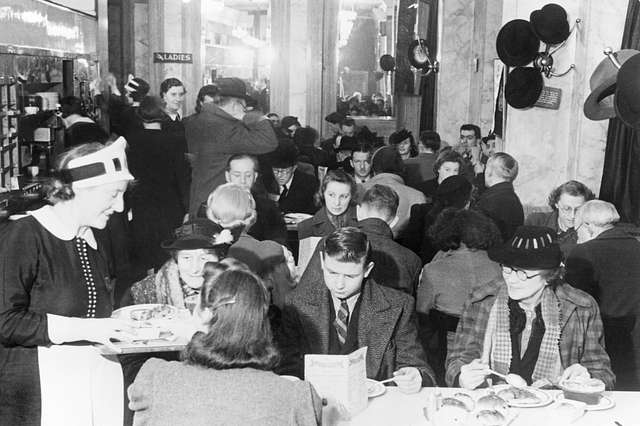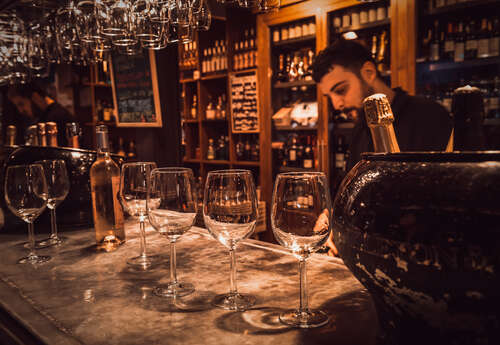
The first Chardonnay and Pinot Noir releases from a promising project raises the bar for quality in the rapidly growing Coteaux de Champagne still-wine scene
In essence, this is a lab,” says Champagne Louis Roederer’s chef de cave Jean-Baptiste Lécaillon of the house’s new Coteaux Champenois project. “With these still wines, we seek to express the terroirs and to see them without the bubbles.” The climate during the last few decades of the 20th century wasn’t favorable for still-wine making in Champagne, but climate change has opened up new possibilities. “We can pick earlier and riper, and the fruit can be perfectly clean. We wanted to explore these dimensions,” Lécaillon reasons regarding the decision to venture into the making of still wine.
“Lab” is a very apt description, the minuscule size of the project becoming evident when one tours the Roederer winery, one corner housing all the state-of-the-art tools needed for making still wine. There is a smart collection of small-sized sandstone, stainless-steel, and oak vessels, and now Lécaillon is investing in a new destemmer to perfect the Coteaux Champenois—“similar to what we have at Pichon-Longueville and Domaines Ott,” he specifies with boyish enthusiasm. A lot of tender loving care is being put into the project, which is also a team-building exercise, since many of the winemaking tasks are performed by Lécaillon himself working alongside his principal winemakers.
Letting the terroir speak
The project had started in Mareuil-sur-Aÿ in 2002, when Roederer carefully chose and replanted the 0.43ha (1-acre) Charmont plot with Burgundy and Alsace clones of Pinot Noir, specially selected for still-wine making. Biodynamic à la Roederer for sure, the viticulture is completely different from that in the rest of their vineyards, with no trimming taking place and the vines being trained and trellised to expose the fruit more fully to the sun in order to push ripeness.
Although the first wines were crafted back in 2014, Lécaillon was not willing to release the wine commercially until the 2018 vintage. “It is not to be a copy of Burgundy. It has to come with the lightness of Champagne. We don’t want it to be too tertiary or too clayey,” is how he describes the intended style.
Pinot Noir is known to be a hard variety to master, but contrary to his initial expectations, Lécaillon found the white Coteaux Champenois more difficult to craft: “We started a similar project in Avize but finally gave up on it because the plot wasn’t able to produce anything more special than what we had accomplished from it for Cristal.” Later, a majestic still 1961 Le Mesnil gave Lécaillon the idea of looking for another site there. He identified a 0.55ha (1.4-acre) plot of vines in Le Mesnil-sur-Oger’s Volibarts. These vines, planted in 1997, were fighting the grapevine fanleaf (court-noué) virus, producing a very small crop of grapes full of character, which Lécaillon foresaw would make exceptional still wine.
From à la carte to tailor-made
Jean-Baptiste Lécaillon describes the overall Roederer approach as “à la carte winemaking,” but for the Coteaux Champenois this is taken to another level. Grapes for the still red wine are sorted as many as four times in the vineyard and cellar, because Lécaillon has realized the importance of the lignification of the stems: “Ripe stems may confer greater finesse, energy, and fragrance to the wine.” Thus, only perfectly brown stems are allowed into the maceration, while the less ripe ones are destemmed. After spontaneous fermentation and very gentle extraction the wines continue aging in Burgundy barrels of different kinds. At the end of the élevage, the wine is blended, with only the best components making their way into bottle. “Since we are in Champagne, even if it is a single-vineyard wine, blending has taken place,” Lécaillon confirms.
The white Coteaux Champenois was first crafted in 2018. Here the tailoring means separating the small bunches of the fanleaf virus-infected vines from the regular crop. The former are foot-trodden and given a short time in contact with the skins. “These bunches are so tasty, almost Muscatty,” Lécaillon explains. “They come with accentuated acidity and more tannin.” After the batches are combined, the bespoke approach continues. Three types of small vessel are used for the spontaneous fermentations: 320-liter stainless-steel barrels for “the reductive potential,” 250-liter sandstone vessels for “unoaked breathing,” and a small number of new Burgundy barrels for “toasty sucrosity.” The wines are allowed to go through malolactic fermentation, which is followed by nine months’ maturation.
A wine of the past and future
Like other Champagne maisons, Louis Roederer used to produce still wines in the past. The last ones were commercialized sometime before World War II, but privately Camille Olry-Roederer, who led the company for 40 years in the middle of the 20th century, maintained a small production and used to surprise her dinner guests with still wines. Thus, the house’s president Frédéric Rouzaud chose to dedicate the Coteaux Champenois collection to her, his great-grandmother.
The 1,600 bottles of the red and 2,900 of the white Coteaux Champenois from the inaugural 2018 vintage have pretty much found their allocated homes upon release. Roederer fans will surely regard the Coteaux Champenois as eminently collectible, despite the price tag of €160 for the red and €140 for the white, which positions the wines at the pinnacle of Coteaux Champenois production, alongside Egly-Ouriet’s Ambonnay Rouge. But the real question, perhaps, is, Where do the wines sit in global Pinot Noir terms?
I have had the pleasure of following Roederer’s Coteaux Champenois project since 2016 and have marveled at the steep learning curve the team has been following. Big leaps forward have been taken, yet I still find a slight “bouquet of experimentation” hovering over these first releases. The pairs from 2018 and 2019 are quite different, reflecting both the vintage variation and the evolving winemaking practices. The 2018 red is delightfully delicate, lightweight, and energetic, full of pure, fragrant Pinot fruit—very Champenois, with even a chalky, mineral feel to it. There is more ease, depth, and volume to the 2019, a very smartly made wine. The 2018 white has a lovely, textural palate yet is still a very subtle wine. I had my biggest wow moment savoring the 2019 Coteaux Champenois Blanc. The team has managed to enhance the natural complexities with super-fine oak-handling and beautiful reductive sensations, which are so seamlessly integrated with the crunchy fruit and racy mineral structure. With this most recent expression, I start to get excited about Coteaux Champenois’s potential.
Louis Roederer’s arrival on the already buzzing Coteaux Champenois scene heralds a new era and has already laid down a new benchmark for still-wine making in Champagne. But as always, Jean-Baptiste has his eyes on the future. Roederer has identified and replanted several other plots for still-wine making, this time with its own massal selection and with lessons learned from the initial project. The Collection Camille is still dawning—but drawing from the past, it is already writing the future.
Tasting
Louis Roederer Hommage à Camille Coteaux Champenois Blanc 2018
The reserved nose gives an instant chalky whiff. The cool and crunchy Chardonnay fruitiness is mild, coming with an elegant, floral twist backed up by refined oaky tones. There is roundness to the texture, but the breezy salinity is distinctively Champenois. A subtle and delicate whole. 91
Louis Roederer Hommage à Camille Coteaux Champenois Blanc 2019 (pre-release)
Instantly impressive on the nose, which comes with a cool restraint to the aromatics. The palate is led by the perfectly clean, crisp yet sweet, ripe fruitiness, complemented by an attractive, smoky-reductive twist, enhancing the wine’s mineral feel. There are also layers of spicy tones, with the oak elegantly adding to the equation. Structured and soothingly oily-textured, yet racy and driven. A very smart white wine. 94
Louis Roederer Hommage à Camille Coteaux Champenois Rouge 2018
The youthful, already expressively fragrant nose captures the pretty, perfume-like nuances of Pinot Noir. There is rare delicacy to the nose, which is very much on the red-fruit side, with sweet rose-petal notes adding to the charm. The oakiness is light and seamlessly integrated to the ethereal fruitiness. The driven yet silky palate comes with rare vivacity and tension. A gentle bite of fine-grained tannin brings grip to the chalky, mineral finish. Very primary still, with the promise of even greater aromatic complexity. 93
Louis Roederer Hommage à Camille Coteaux Champenois Rouge 2019 (pre-release)
Already on the nose the fruitiness comes across as darker, sweeter, and spicier. Dark cherry, vanilla, and redcurrants. The palate is beautifully textured, yet it remains invigoratingly fresh and light. The smooth silkiness rounds up the palate, with the structure feeling more horizontal and concentrated than for the 2018. An easy-to-appreciate, bolder, riper expression. 93






